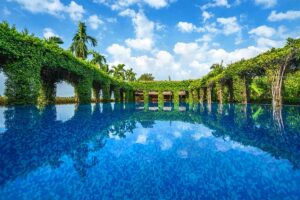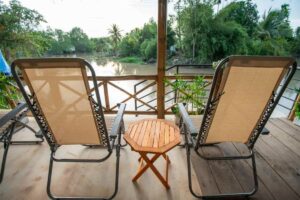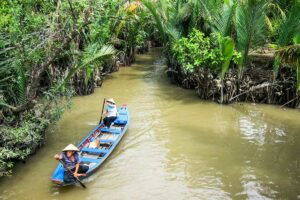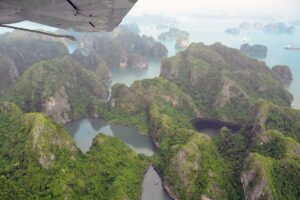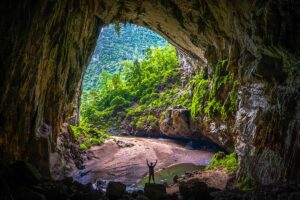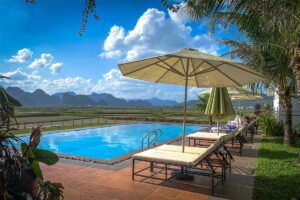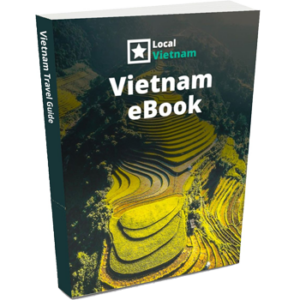The Bang Lang Stork Sanctuary (or Bang Lang Stork Garden) is one of the highlights for bird watchers in the Mekong Delta. But even though you are not, it is still a stunning sight for everyone to see storks and other beautiful birds in a wooded area surrounded by vast rice fields and rivers.
- Visiting information
- Brief history
- Birds and storks
- Highlights
- Best time to visit
- How to get there
- Tips for visiting
Visiting information
To help develop and mainten the stork garden, there is a small entrance fee:
- Adult fee: 20,000 VND/person
- Children fee: 10,000 VND / person.
- Opening times: 5:00am – 7:30pm
- Location: Thuan An, Thot Not, Can Tho
Brief history of Bang Lang Stork Sanctuary
Bang Lang Stork Sanctuary was actually created spontaneously by a local named Mr. Nguyen Ngoc Thuyen, also known as Mr. Bay Thuyen. In the past this area was a rice paddy field, around the rivers and canals were only a few bamboo bushes, nipa palms and trees. He said that only a few hundred storks have come since 1983, but in 1992 more and more storks came back and filled the entire yard. Because he loved the storks, he planted more trees so that they could have a place to live. In 1997 it started bringing tourists there and today the area is larger than 16,000 square meters
The sanctuary’s name is “Bang Lang” – meaning “Crape Myrtle”. This is a tree species with blooming purple flowers in the summer. This name originated from the fact that in the past there were many of these trees. Although today most of these trees have disappeared, it is still called “Bang Lang Stork Garden” or “Bang Lang Stork Sanctuary”.
Birds and storks in the sanctuary
More than 300,000 storks of 20 different species live in Bang Lang Stork Garden. The White storks and blue storks make up the largest numbers while the smallest bird is the red stork. In addition, there are also other birds to spot, some of which are very rare. Some of the other birds you can spot are pelicans, herons and tits. Storks lay four eggs every year and it takes 6 to 7 months for a chick to reach maturity. For that reason, the number of storks is gradually increasing every year.
If a young bird falls out of its nest, Mr. Bay takes it home and feeds it till its big enough, then returns it to the correct nest. Not all storks live in the sanctuary all the time time. Often, 2 months after they hatched the eggs, the storks and their young will likely leave the next to make room for other storks.
Bang Lang Stork Sanctuary highlights
1. Spotting storks
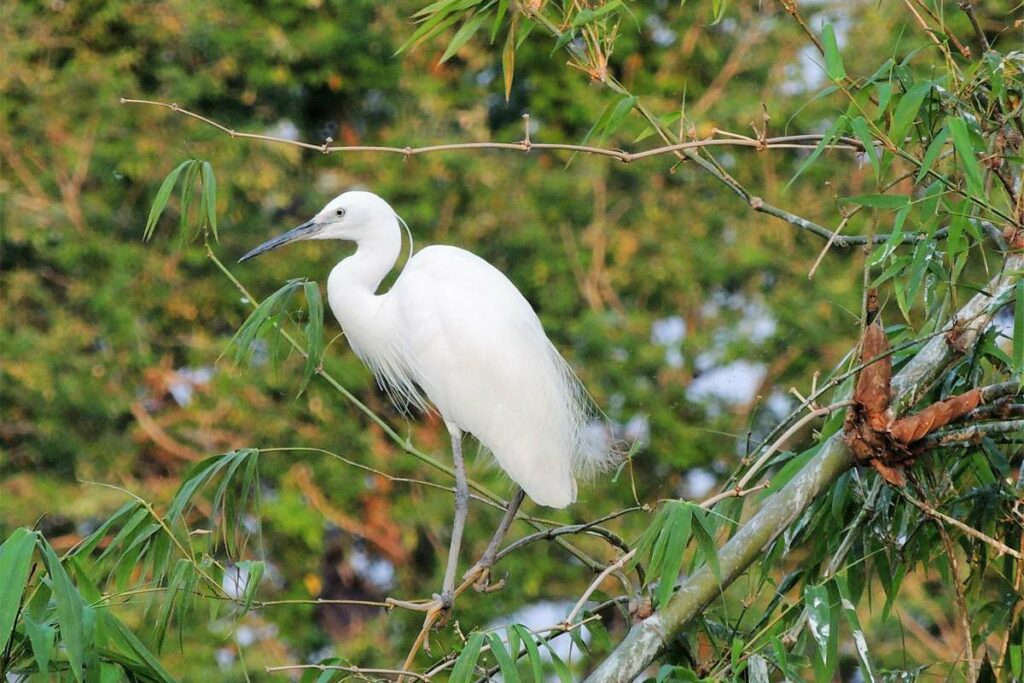
The main reason to visit this park will come as no surprise, stork viewing. Since the storks are all around you and you can get quite close, binoculars are not necessary, but can be useful.
2. Boat trip
During the rainy season, the forest fills with water, making it semi-submerged. This is the time of year when you can sail through the forest with a boat. It is a wonderfully soothing experience when you float through the water while enjoying nature.
3. Walking and cycling
There are several paths through and along the park that are ideal for walks and bike rides. In addition, you can also climb an 8-meter-high observatory to enjoy a comfortable panoramic view of the stork garden.
Best time to visit
Best time of year
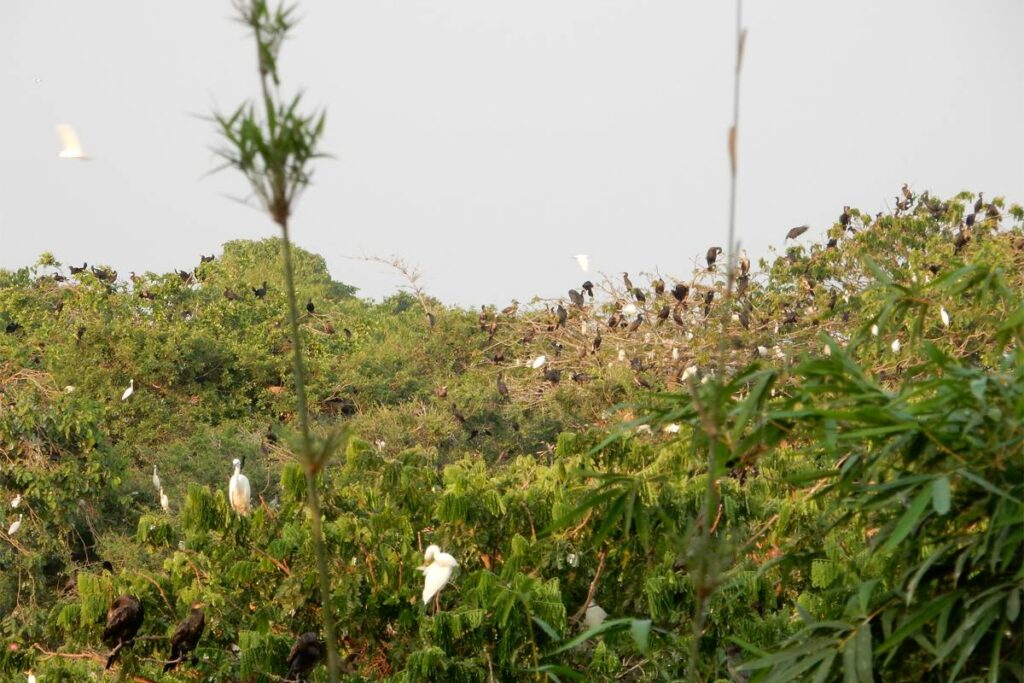
The Bang Lang Storks Garden is most populated with birds during their breeding season (breeding season) from August to January each year. This is the best time to visit the stork garden. In the spring, from February to April, the Chinese pond heron nests and lays eggs. In addition, during this time you can also take a beautiful boat trip to the Stork Garden and see the flowers bloom along the banks of the river along the way.
Best time of day
Although the stork garden is still quite a distance from Can Tho, it is advisable to be here early in the morning, around 6-7am, for the best time of the day. In the early morning the storks fly to forage for food. This is also the most beautiful scene of the day. Thousands of storks flying away at the same time is a magical sight. If this is too early you can also go late in the afternoon, around 5 o’clock. This is when flocks of storks fly back to their nest in the red-pink midday sun.
How to get there
Bang Lang Stork Garden is located 50 km from Can Tho city and just 15 km from Long Xuyen. The best way to get here is first to travel to Can Tho or optionally to Long Xuyen. Both cities, but Can Tho in particular, are very well connected by bus from Ho Chi Minh City. In addition, Can Tho also has a domestic airport with flights to and from Hanoi, Phu Quoc and Da Dang. From Can Tho to Bang Lang Stork Sanctuary you can take a boat or rent a car with driver to get there.
Tips for visiting
What to brind and wear
It is advisable not to wear too bright colors, so that you can blend in better. Bring an anti-mosquito and insect spray and a drink and a snack (make sure that waste does not end up in the park). There are also restaurants nearby where you can eat.
Other things to do around Bang Lang Stork Sanctuary
There are no other attractions in the vicinity of Bang Lang Stork Sanctuary, but the area itself is beautiful enough to go out on your own. You can take a boat trip and maybe even arrange a boat that will take you all the way to Can Tho across the Hai River. Rent a bicycle to cycle through the beautiful rice fields that dot the ewe-merchant garden and visit local villages to learn more about the local Mekong culture.
As mentioned earlier, the sleepy town of Long Xuyen is only 15 km away. There isn’t much to do here, but the local Long Xuyen floating market early morning is well worth a visit. From this city you can also explore the beautiful surroundings of An Giang province.
Alternatives
The Mekong Delta is one of the best areas for birding in Vietnam, with several protected national parks and nature reserves. Other places besides Bang Lang Stork Sanctuary where you can do bird spotting are Tra Su forest and the best place is Tram Chim National Park. In addition, you will also be able to easily spot birds during a simple bike ride in the Mekong Delta.
